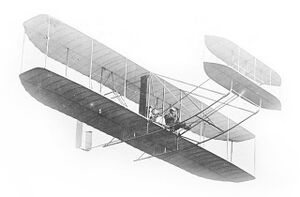Aestrup-Lavigne Aeroplane: Difference between revisions
Jump to navigation
Jump to search
(Created page with "{|{{Infobox aircraft begin |name = |image = Image:ASMRCA.jpg |caption = The Aestrup-Lavign Avr. I during testing in January 1902 }}{{Infobox a...") |
No edit summary |
||
| Line 1: | Line 1: | ||
{|{{Infobox aircraft begin | {|{{Infobox aircraft begin | ||
|name = | |name = | ||
|image = Image: | |image = Image:ALAIII.jpg | ||
|caption = The Aestrup-Lavign Avr. | |caption = The Aestrup-Lavign Avr. III during testing in January 1903 | ||
}}{{Infobox aircraft type | }}{{Infobox aircraft type | ||
|type = Experimental aircraft | |type = Experimental aircraft | ||
Revision as of 16:09, 7 October 2021

| |
| The Aestrup-Lavign Avr. III during testing in January 1903 | |
| Role | Experimental aircraft |
| National origin | |
| Designer | Johannes Aestrup Cédric Lavigne |
| First flight | 10 December 1901 |
The Aestrup-Lavigne Aeroplane refers to a series of early, powered heavier-than-air aircraft designed, built, and tested by Johannes Aestrup and Cédric Lavigne in the first years of the 20th century. Developed from their glider which they successfully tested from 1898 to 1900, the aircraft are retrospectively classified as the Avr. I, Avr. II, Avr. III, and Avr. IV.
Design
Specifications
General Characteristics
- Crew: 1
- Length:
- Wingspan:
- Height:
- Wing Area:
- Empty Weight:
- Powerplant:
Performance
- Maximum Speed: Mach 1.8 at altitude
- Service Ceiling: